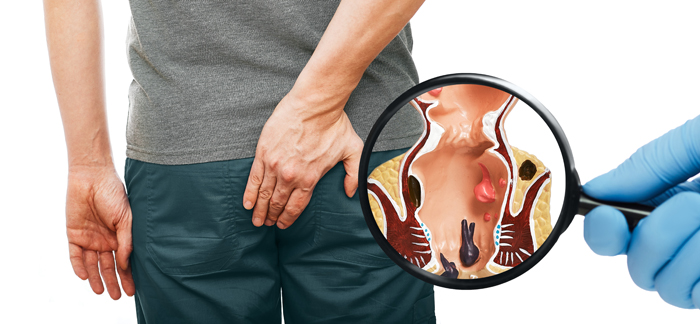
Different Types Of Piles
Piles treatment in Ghaziabad, also known as hemorrhoids, are swollen and inflamed veins in the anus and lower rectum. They can develop inside the rectum (internal hemorrhoids) or outside the anus (external hemorrhoids).
The exact cause of piles is unknown, but they are believed to be caused by increased pressure in the veins of the anus and rectum. This pressure can be caused by a variety of factors, including straining during bowel movements, constipation, pregnancy, obesity, and sitting for long periods of time.
Symptoms of piles can include pain, itching, bleeding during bowel movements, and a lump or swelling around the anus. Treatment for piles can vary depending on the severity of the condition, but may include changes in diet and lifestyle, over-the-counter medications, or in some cases, surgery. It is important to seek medical attention if you suspect you may have piles, as they can be a sign of a more serious underlying condition.
Internal Haemorrihoids
Internal hemorrhoids are swollen veins that develop inside the rectum, which is the lower part of the large intestine. They can be classified into four different grades based on their severity:
Grade 1: The hemorrhoids are small and are located inside the lining of the anus. They do not protrude outside the anus and are usually not visible.
Grade 2: The hemorrhoids are larger than grade 1 and may protrude outside the anus during bowel movements. However, they usually return inside on their own after the bowel movement.
Grade 3: The hemorrhoids are large and frequently protrude outside the anus. They may require manual pushing back inside the rectum.
Grade 4: The hemorrhoids are large, permanently protruding outside the anus and cannot be pushed back inside. This is the most severe form of internal hemorrhoids.
Internal hemorrhoids may not always cause symptoms, but when they do, they may include bleeding during bowel movements, a feeling of fullness or discomfort in the anal area, and itching or irritation in the anus. Treatment options for internal hemorrhoids may include dietary and lifestyle changes, topical medications, and in severe cases, surgery. It is important to seek medical attention if you suspect you may have internal hemorrhoids, as they can sometimes be mistaken for other more serious conditions.
Prolapsed Haemorrhoids
Prolapsed hemorrhoids are a type of internal hemorrhoid that protrude outside the anus. They occur when the internal hemorrhoids become enlarged and bulge out of the anal opening. Prolapsed hemorrhoids can be classified into two types:
-
Grade 2: The hemorrhoids protrude during a bowel movement but retract back inside the rectum on their own.
-
Grade 3: The hemorrhoids protrude during a bowel movement and need to be pushed back inside the rectum manually.
Prolapsed hemorrhoids may cause pain, discomfort, itching, and bleeding. In some cases, they can lead to complications such as blood clots or strangulation, which can cause severe pain and require immediate medical attention.
Treatment for prolapsed hemorrhoids may include dietary and lifestyle changes, topical medications, or procedures such as rubber band ligation, sclerotherapy, or surgery. The treatment will depend on the severity of the prolapse and other individual factors, such as the person's overall health and medical history. It is important to seek medical attention if you suspect you may have prolapsed hemorrhoids, as they can be a sign of a more serious underlying condition.
External Haemorrhoids
External hemorrhoids are swollen veins that develop around the anus and under the skin around the opening of the anus. They can cause pain, discomfort, and itching. External hemorrhoids can be caused by a variety of factors, such as constipation, straining during bowel movements, pregnancy, and obesity.
Symptoms of external hemorrhoids may include a painful lump or swelling around the anus, itching, bleeding, and irritation. Treatment for external hemorrhoids may include dietary and lifestyle changes, such as increasing fiber intake, drinking more fluids, and avoiding straining during bowel movements. Over-the-counter topical creams and ointments may also be recommended to relieve pain and itching. In some cases, a medical procedure may be necessary to remove the hemorrhoid, such as rubber band ligation or surgical excision. It is important to seek medical attention if you suspect you may have external hemorrhoids, as they can sometimes be mistaken for other more serious conditions.
Thrombosed Haemorrhoids
Thrombosed hemorrhoids are a type of external hemorrhoid that occur when a blood clot forms in the swollen vein. This can cause the hemorrhoid to become very painful, swollen, and tender to the touch. Thrombosed hemorrhoids are typically characterized by a firm, painful lump or swelling around the anus.
Thrombosed hemorrhoids can be caused by a variety of factors, such as straining during bowel movements, pregnancy, and sitting or standing for long periods of time. Treatment for thrombosed hemorrhoids may include over-the-counter pain relievers, warm sitz baths, and topical medications to reduce pain and inflammation. In some cases, a medical procedure may be necessary to remove the blood clot, such as incision and drainage or rubber band ligation.
It is important to seek medical attention if you suspect you may have a thrombosed hemorrhoid, as they can be very painful and may require medical intervention to relieve symptoms. In some cases, thrombosed hemorrhoids can also be a sign of a more serious underlying condition, so it is important to get a proper diagnosis and treatment plan from a healthcare professional.
